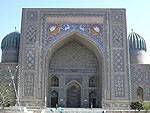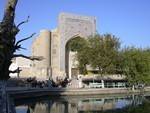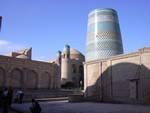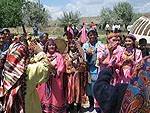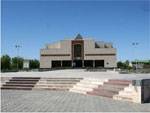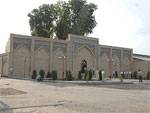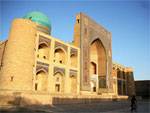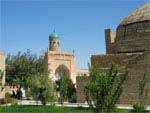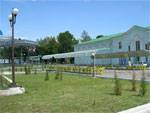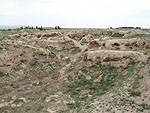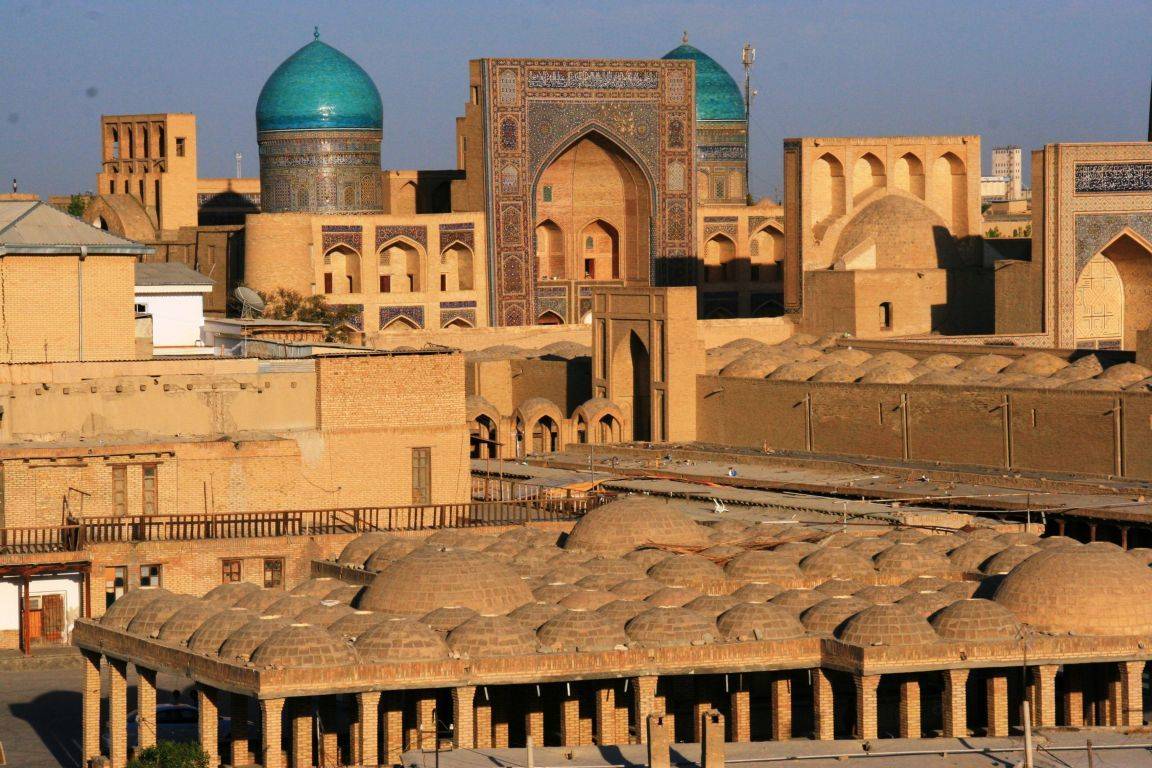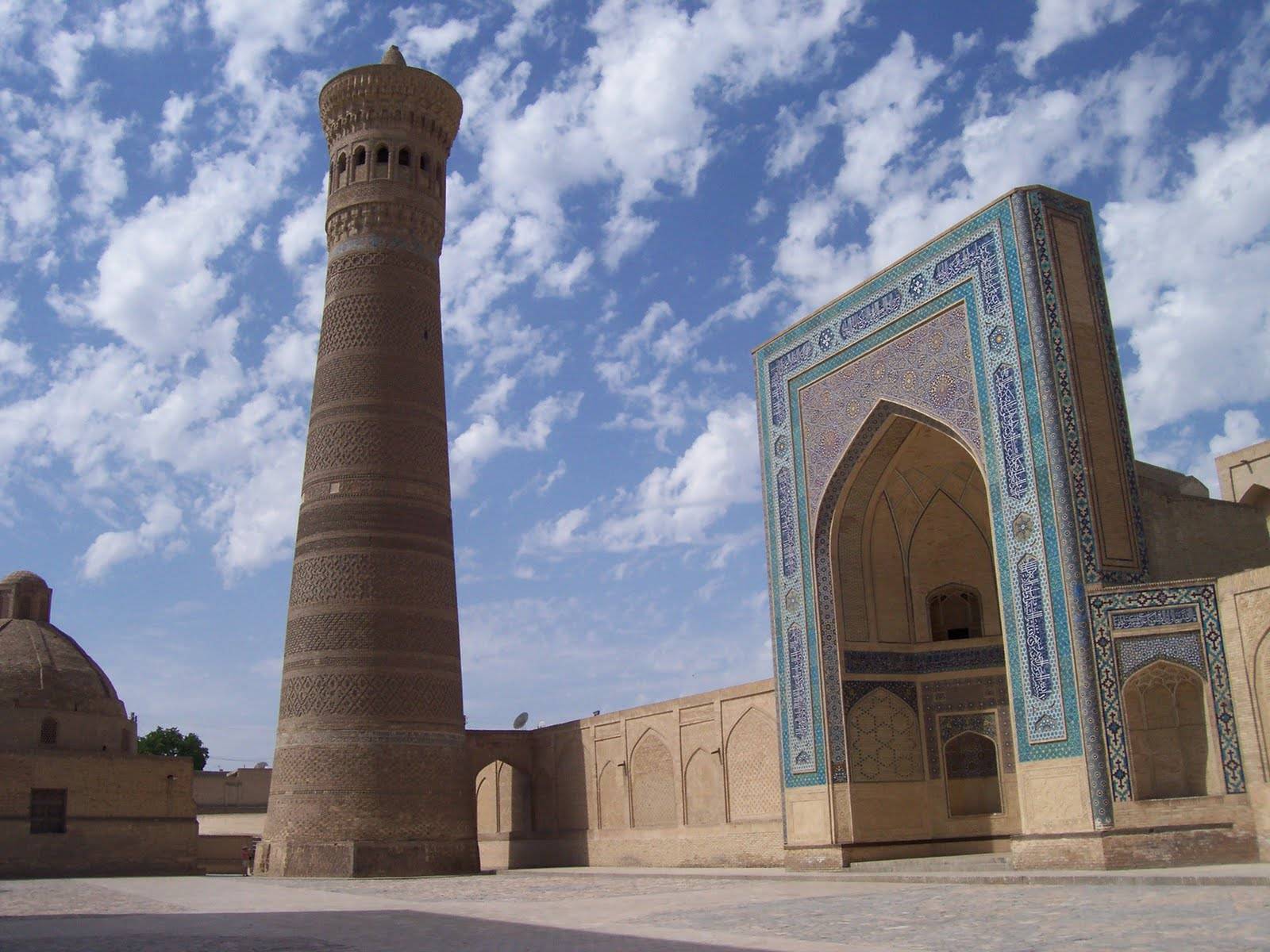Pearl of East: Your travel guide in Uzbekistan.
|
Main Menu
Tashkent
Samarkand
Bukhara
Khiva
Baysun
Nukus
Margilan
Ferghana
Nurata
Namangan
Kokand
Sarmysh Say
Termez
|
News / НовостиUzbekistan: Bukhara is a storehouse of masterpieces of the world architecture06/07/2015 10:58 Bukhara is an amazing city of the planet. Its analogues can be hardly found anywhere else. Every year it attracts a huge number of tourists from different corners of our vast world who witness the living history frozen in time in the stones of numerous monuments of medieval architecture, which have been kept through many centuries to today, in order to inform us about life, lifestyle, culture, interests, hobbies of common people, as well as representatives of “the most powerful” – the ruling elite – khans, emirs and their officials. Bukhara-i-Sharif, or Noble Bukhara, for centuries has been and remains to this day special in every sense of this word as iconic city of the East. The most outstanding minds lived here and created great things. Modern Uzbek society is so proud and honors them. Among the huge number of thinkers, philosophers, poets and sages are the following: Ibn Sina, Rumi Djalaleddin, Omar Khayyam, Alisher Navoi, Nizami Gandjevi, Rudaki, Dakiki, Ferdowsi and many others, for whom Bukhara became a home and blessed land. Residents of the city appreciated, respected and revered Bukhara very much and therefore gave it a lot of different names that characterize the city itself and its essence. The most interesting city in the world writers and poets have always called and now call is the Holy Bukhara, land of Islam, the mainstays of religion. All of these names are associated primarily with the religious significance of Bukhara for the entire Muslim world. The fact is that in the 8th century when the territory of Central Asia was captured by the Arabs, led by Kuteib ibn Muslim, Bukhara deservedly received the status of the holy city, and a saying appeared “Throughout the world the light descends from the heavens and only in Bukhara it raises from the earth”. People of Bukhara started to say so, because on earth today there are thousands of saints and Muslim saints. Over time Bukhara remained as one of the main centers of Islam in Central Asia, the center of Muslim theology and its rulers called themselves “emirs of the Faithful”. On the territory of “Stars of the Islamic world” and “the Holy City of Central Asia” in the middle ages, there were 360 mosques and 80 madrassas. Bukhara is a unique city because, since the 5th century AD, it continuously developed on the same place. In 1993 historical part of Bukhara was included in the UNESCO World Heritage list. In 1997, under the auspices of UNESCO the 2500 anniversary of the founding of the city was celebrated. For many centuries, camel caravans transported goods along the Silk Road from China and Europe, and, moreover, they carried news about other cultures and civilizations. This news on the intersection of daily routes was reflected in the architectural monuments of Bukhara and cultural uniqueness of its people. It is safe to say that the city of Bukhara is as old as Samarkand, though its exact age is not known to anyone. However, the written historical sources claim that the first settlements on the territory of Bukhara appeared 2500 years ago. The same result was given by the study of cultural layers, reaching in some places up to 20 meters in depth. At this point, archaeologists discovered the remains of household items, coins, jewelry, dating from the 4th century BC. For the first time the city was mentioned in the sources of Chinese travelers, who lived in the 2nd century BC, under names such as Pu Ho, Buho, Nu Mi, Buge. Later historian of the east of 10th century Narshakhi noted that none of the city in its history had so many names, how many had Bukhara. Chinese and Uighurs called the city “Bukhar”, which in Russian means “Place of idols”. The famous Russian scientist Barthold advanced the theory that Bukhara goes back to Sanskrit (ancient Indian) word “Vihara”, meaning “Monastery”. However, at the same time it is worth noting that all these terms are close to the modern name “Bukhara”. Origin of Bukhara is associated with many legends and stories, invent who loves oriental people. So, one legend tells how the son of Iranian king Siyavush arrived in Bukhara, married the daughter of the king Afrasiyab and built a fortress Ark. Today, rich architectural heritage of Bukhara is the carrier of culture of the Uzbek society, people, nation, a man in all its fullness and variety of forms. Architectural heritage, along with nature and society is a major asset of Uzbekistan. It is a rare combination of monuments of different eras that characterize the development of architectural architecture for twenty-five centuries. Most of the center of Bukhara is the architectural area, the bulk of which is occupied by the former madrasah of Emir Castle Arch (10-9 centuries) has now become a museum. Arch is located opposite the mosque of Bolo House – the official place of the Emir for praying, its construction refers to 1718. The narrow streets along the Arch can come to a small square with a complex Poyikalon, which consists of Kalyan Mosque (16th century) – one of the majestic buildings of Central Asia, accommodating up to 10 thousand people, madrasah of Mir Arab – an Islamic seminary and Kalyan Minaret – 47-meter tower (10 meters deep), which can be seen from almost any part of the Old Town. This ancient madrasah is 850 years old. The modern look of the city was acquired during the dynasties of Sheibanids and Ashtarkhanids (16-17 centuries), when most exquisite mosques and madrassas, caravanserais and baths, walls and gates, as well as major architectural ensembles and tombs were built. Today, walking around the Old Bukhara, founded in the first century BC is like to walk by monuments of ancient civilizations. To this day, ancient citadel wall, more than 140 architectural monuments of the Muslim era, amazing neighborhoods and narrow streets of the old town are preserved. Bukhara is located in the south-west of Uzbekistan, about 200 kilometers from Samarkand. The city is located in the status of the administrative center of Bukhara region, which is the center of craftsmanship, spirituality and tourism of the country. Youth of Bukhara region occupies the leading position in the country by scientific potential, spiritual maturity and diligence. Most of the Bukhara region is occupied by the Kyzyl Kum desert. The total area of the region is 39 400 square kilometers. The climate here is almost as in the entire territory of the republic, sharply continental. The total population of the Bukhara region is 1,4 million people. 32% of the population lives in in the cities, and 68% – in rural areas. The population of the city of Bukhara as of 2005 is 270 661 people. Bukhara today, though it is considered an Islamic center and religious capital of Central Asia, the burial place of the prophet and the descendants of Muslim saints, has always been a refuge for many other religions. For example, there are Jewish synagogues here.
Bukhara region consists of 11 administrative districts, among which Bukhara is included. Other major cities in the region are Gijduvan, Romitan and Kagan. The region is rich in natural gas, oil, graphite, bentonite, marble, gypsum, sulfur, limestone and other raw materials for building materials. It is noteworthy that the approximate amount of oil is 10 million tons, and natural gas in the amount of 220 billion cubic meters. These resources are located in the territory which runs through the Kandym, Okkum, Parsonkul and other parts of the region. By the way, the largest refinery in the country as a primary resource uses fossil from these fields. The most active industries include cotton ginning, textile and silk. Not so long ago there was a campaign to revive the traditional Uzbek crafts such as pottery, ganch, ceramics, and embroidery. In the region there are 52 joint ventures. Cleaning cotton, textile and silk industry are considered as relatively developed industries. Bukhara today is particularly famous for the processing of karakul pelts, joinery, wood carving, jewelry making, embossing copper, creating works of art. Possession of the city, of course, is the production and sale of silk. The city has a leather factory, which work is focused on the processing and release of products from caracul skins, as well as development of food industry. In the near future plans on the development and use of foreign investment the focus will be on areas such as the reconstruction of silk industry, development of production of construction materials, improvement of communications infrastructure, development of agricultural production and processing of agricultural products, development of tourism and service sector. Modern Bukhara is as colorful and interesting as the people living on its soil. There are processes of creation and integration of new Bukhara, new and beautiful architectural objects are being built. Bukhara is famous today as a kind of live museum and a center of international tourism. The tourism infrastructure of the city meets international standards, including the airport, which was restored in 1997 at the time of the celebration of the 2500th anniversary of the city foundation. Bukhara, like many other Uzbek cities is divided into the Old Town and New Town. However, when compared with the others it is a clear advantage. For example, if in some cities, the oldest part has museum-historical nature, where they are only monuments of ancient architecture, and almost no inhabitants, and in the old part of Bukhara people live as a century ago. In the new town there are administrative buildings, schools, institutes, industrial enterprises. Currently Bukhara is a touristic center of the Republic of Uzbekistan. The Government of Uzbekistan has put a lot of effort and a lot of finance invested in the development of this sector in order to create necessary conditions for comfortable stay of foreign visitors in the city. And we can say that power invested in it was spent knowingly. After all, comfort for the visitor is one of the main pledges that he will leave the city with only good impressions, and maybe even want to come here again. For this purpose, in the Old Town, and not far from its suburbs a large number of hotels are built up. But, of course, we should not forget about the medieval historical architectural monuments, which, like the elderly, require special care and supervision. The Government today is doing a lot for the conservation and restoration of monuments of Bukhara. For example, Samanids mausoleum, architectural complexes Chor-Bakr, Bahauddin Naqshbandi and many others are revived. However, the credit for this belongs not only to the government, craftsmen and artisans from indigenous people are also taking an active part in reconstruction of the ancient image of their hometown. For the preservation of the rich history of Bukhara well-known architects are also performing. They helped to restore many historical monuments, slightly changing its original appearance. However, even as a result of restoration work, the centuries-old historical culture has not lost its unmatched beauty and continues to be a common cultural and artistic whole. It should be noted that the visitor of the city in order to explore and get acquainted with all the sights, needs not less than three or four days. This time will be enough to plunge into its mystery and eastern tranquility, walk through the narrow alleys, observe the life of local people who live here as did their ancestors, and for a moment feel like an integral part of this. Bukhara – is not only a world-famous touristic city, but also a Muslim shrine. Therefore, besides the usual curious tourists, pilgrims come here in order to carry out rituals before visiting principal city of Islam – Mecca. In 1997, a new modern air terminal for foreign tourists was built. Its capacity – 150 passengers per hour. In 1999, the “Bukhara” airport was granted international status. The international terminal is able to provide its passengers the full range of services in accordance with generally accepted international standards. Here you can find arrival and departure halls, spacious lounge, snack bars, shops, medical center, luggage storage equipped with the necessary modern equipment. Design of halls of serving official delegations and increased comfort is made in national style, which creates a special cozy atmosphere in moments of pre-holiday. “Bukhara” airport is able to receive all types of aircraft both western and eastern production (from the Yak-40 and An-24 and Boeing - 767, 757, 747). From Bukhara airport flights to the capital of Uzbekistan – Tashkent, and twice a week – to Moscow are committed daily and once a week to St. Petersburg. Upon arrival directly from the airport to the historic city center one can reach by buses and taxis. In 2008, the international “Bukhara” airport won the first place in the contest “The best airport of the CIS in 2008”, which was held in May 26-28 in Moscow. The evaluation criteria of the competition consisted of architectural planning decision of air terminal complexes, ensuring aviation security, information system, the presence of shops, cafes in airports and others. The conference was attended by leaders and specialists of airports, airlines from Russia, countries of CIS and Baltic, Europe and America.
|
Calendar
Weather
Useful Links
Searching for Airways and Hotels
|

